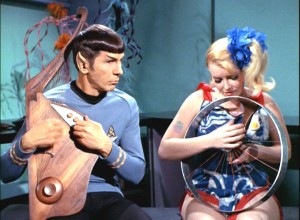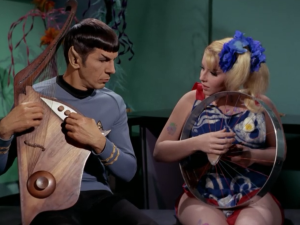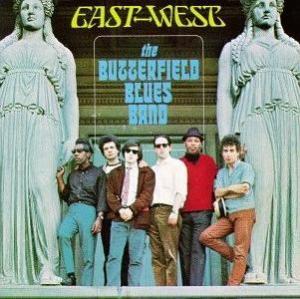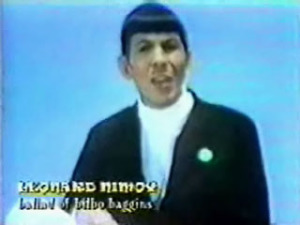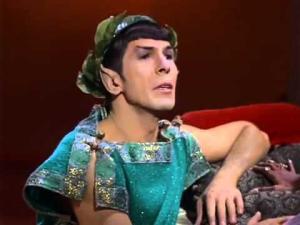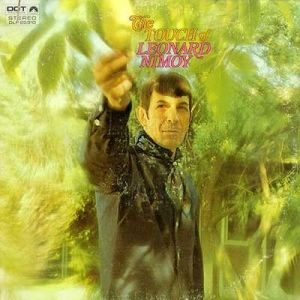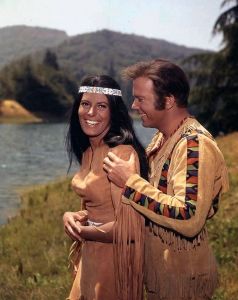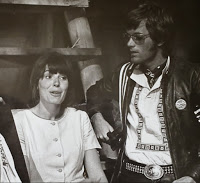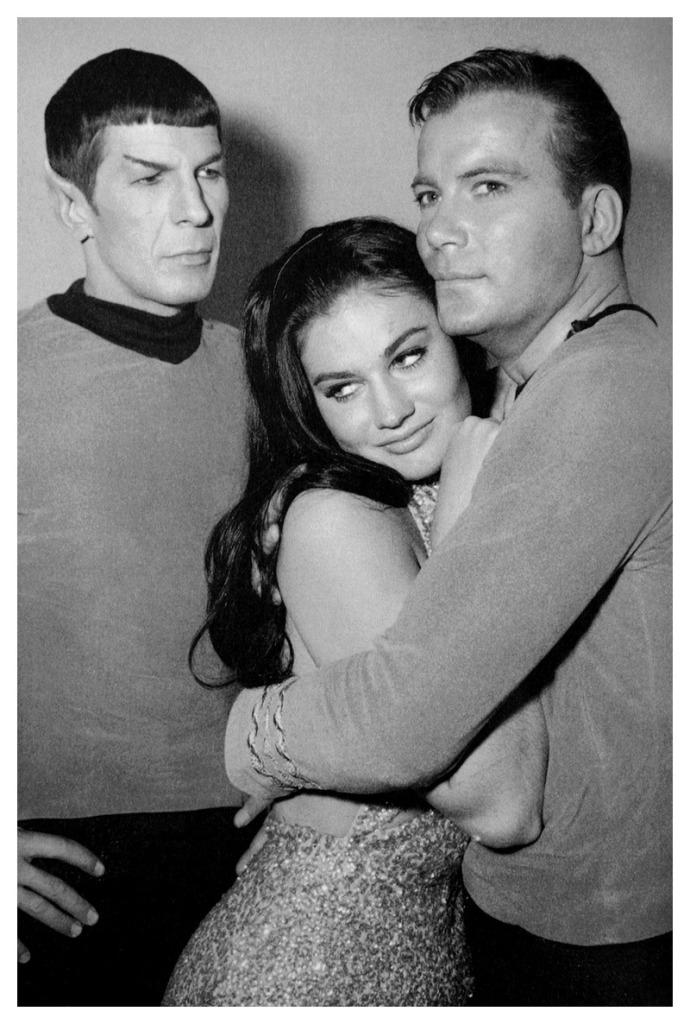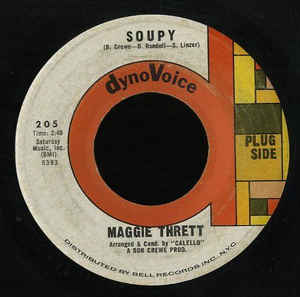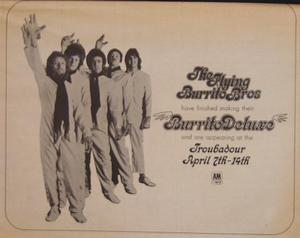In some ways, Star Trek seemed part of the zeitgeist that fueled so much warp-drive change in music, the arts, and society in the last half of the ‘60s. Here was a TV program that, to quote its opening voiceover, went “where no man has gone before,” just as rock music was going into wholly unexpected and even unsuspected territory. There were stories that, overtly or subtly, slipped in messages about pacifism, multicultural diversity, tolerance, and greater social roles for women, though these were often diluted or compromised by the need to stage television action drama. There was even some sex and drugs, at least by the standards of late-‘60s network television. But not, alas, much rock and roll.
Perhaps wisely, very little actual rock music was heard on Star Trek. (This post, to be clear, only refers to the original series’ 79 episodes as broadcast between 1966 and 1969, not the numerous movies and spin-off series from subsequent decades.) It was hard enough to predict what technological advances would be made, and how men and women would act, a few hundred years in the future. Had anyone tried to predict the rock of just ten years into the future in 1966 and 1967, they would have gotten it miserably wrong.
The one exception to the non-use of rock in Star Trek, and a notorious one, is the third-season episode “The Way to Eden.” In that installment space hippies, under the direction of a cult-like fanatic, come perilously close to taking over The Enterprise. The necessary distraction is supplied by an honest-to-god “space jam” between Spock and one of the hippies, played by Deborah Downey:
Listen to/watch the clip (you’ll know where to find it, even if fans aren’t supposed to post it), with Spock on Vulcan lute and Downey on what looks and sounds like a psychedelic bicycle wheel. Brief and purely instrumental, if it has any parallel in the world of psychedelic rock, it’s to the Paul Butterfield Blues Band’s pioneering 13-minute 1966 instrumental “East West,” with soaring guitar solos by both Michael Bloomfield and Elvin Bishop.
The rhythm and choked chording to whatever Spock and his friend (and Spock was the crew member who communicated best with the visitors) are playing is a little similar to the riffs that—if as an underlying bed rather than up front—open and run throughout “East West.” Rock criticism is filled with pundits complaining that whites ripped off blacks to reap a greater share of rock’n’roll glory than they deserved. Here, if Spock knowingly “arranged” “East West” for his own purposes (and his knowledge of Earth history and culture was quite deep), we have a little-acknowledged instance of Vulcans ripping off Earthlings for their own artistic advantage, without proper credit.
The space hippies perform a few hippie folk vocal numbers in “The Way to Eden” which have been justly chastised as pretty dire, epitomizing the stereotypes of the worst actual hippie folk music in their clumsy, self-consciously hip naïveté. Interestingly, at least some of this material was written by some of the actors playing the hippies, Charles Napier and Deborah Downey. Downey even put one of the songs, “The Way to Eden,” on an album of hers titled Painting Pictures, though I haven’t been able to hear any of the record, or even find an image of the cover.
There were, as even some casual Star Trek fans know, spin-off records by a few of the series’ stars. Leonard Nimoy did most of these, voicing some of the tracks in the Spock character; others were frivolous novelties, one particularly amusing clip surviving of Nimoy (not in Spock makeup) performing the Hobbit-inspired “The Ballad of Bilbo Baggins.” William Shatner’s scenery-chewing Shakespearean readings of “Mr. Tambourine Man” and “Lucy in the Sky with Diamonds” are, of course, notorious from their broadcast on Dr. Demento episodes and inclusion on compilations of celebrity novelty discs.
Nichelle Nichols, who besides playing Lt. Uhura occasionally actually sang in Star Trek episodes, did an album while the series was on the air, Down to Earth, which was disappointingly middle-of-the-road jazzy fare. Spock, incidentally, did sing (and not just play his Vulcan harp) on the series, just once, when he croaked his bizarre self-penned medievalesque ballad “Maiden Wine,” aka “Bitter Dregs,” in the “Plato’s Stepchildren” episode. Performed only under manipulation from aliens with super-powers in this fictional scenario, it was actually released on Nimoy’s 1969 LP The Touch of Leonard Nimoy. I haven’t listened to all of Nimoy’s records by any means, but I don’t know whether it’s a compliment or insult to say this is the best track of his I’ve been able to hear.
There was very little rock or soul in any of these cast members’ records; they were a bit older than the ‘60s rock generation, and not really in tune with the counterculture, as much as some may read some anti-establishment sentiment (often engineered by Star Trek creator Gene Roddenberry) into some of the series’ scripts. There were, however, two very direct connections to major figures in ‘60s rock and the era’s counterculture that I was unaware of until reading Marc Cushman’s recent three-volume book series These Are the Voyages. Huge in scope (running more than 1500 pages in all), these are something of the Star Trek equivalent to Mark Lewisohn’s Beatles tomes, with Cushman’s access to original memos, scripts, and production notes yielding incredibly thorough behind-the-scenes documentation of the 79 episodes from the original series. Among these accounts are the stories of their guest stars, which yielded this pair of surprising revelations:
Chekov’s love interest in “Spectre of the Gun,” in which several regulars from Star Trek’s bridge find themselves forced to re-enact the gunfight at the O.K. Corral, is played by Bonnie Beecher. That’s the same Bonnie Beecher who hung out with Dylan in Minneapolis in the early 1960s, before he went to New York to become a folk star. Some sources have it that she was the inspiration for one of his first standout compositions, “Girl from the North Country.” It was in her home that some of Dylan’s first decent-sounding recordings (taped in Minneapolis in 1961, and long bootlegged, though dates for these vary according to the source consulted) were made; one of his Minneapolis tapes from the time includes a song in which she’s specifically named, “Bonnie, Why’d You Cut My Hair?” Another early Dylan composition, “Song to Bonny” (sic) (for which a manuscript survives, though no recording), was a number that, as Clinton Heylin wrote in Revolution in the Air: The Songs of Bob Dylan, 1957-1973, “appears to be Dylan’s first serious attempt to put a real girl into one of his own songs.”
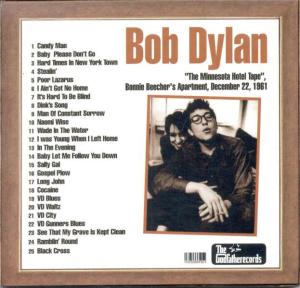
Bob Dylan bootleg bills this material as having been recorded in Bonnie Beecher’s apartment in December 1961.
Unlike some of Dylan’s other early muses, there’s footage of the woman herself, not on some obscure bootleg DVD, but in a widely viewed network TV series. And it wasn’t the only series in which she appeared; she also had been on Gunsmoke, Peyton Place, and The Fugitive. She didn’t continue with her acting career after Star Trek, however, marrying comedian/activist Hugh Romney, aka Wavy Gravy.
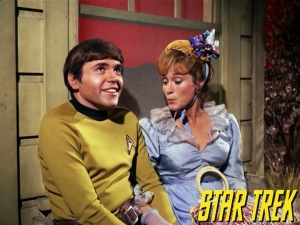
Bonnie Beecher with Ensign Chekov (played by Walter Koenig) in the Star Trek episode “The Spectre of the Gun.”
The other Star Trek guest star with a connection to ‘60s rock, though a bit less direct, was Sabrina Scharf. She plays the woman Captain Kirk marries—though only after he’s suffered amnesia on a planet inhabited by Native American-like residents—on “The Paradise Syndrome.” The match didn’t last, though not for lack of love; Kirk regains his memory around the same time Scharf, playing the character Miramanee, suffers fatal wounds in a stoning.
You wouldn’t guess it from watching the episode, but Scharf also plays the woman who hooks up with Peter Fonda (named Sarah) in the commune in the 1969 movie Easy Rider, filmed around the same time she co-starred with Shatner in “The Paradise Syndrome.” Did Scharf sing, in either Star Trek or Easy Rider? No. Was Peter Fonda a rock star (though he did issue an obscure 1967 single, “November Night,” written by a then-obscure Gram Parsons)? No. But Easy Rider was the first film to effectively use a soundtrack of contemporary rock recordings by artists not in the movie itself, including songs by Jimi Hendrix, the Byrds, the Band, the Holy Modal Rounders, and others. It was also one of the first films to reflect the actual hippie counterculture—much more so than Star Trek (even on “The Way to Eden”). And Scharf was a part of both. Who knew?
A couple years after I posted this, another connection between Star Trek and ’60s rock came to my attention that’s been surprisingly overlooked, considering it invovles a musician with a huge cult following. One of the most popular, and notorious, early Star Trek episodes was Mudd’s Women, memorably described in These Are the Voyages: TOS Season One as about a “rascally space trader who, in reality, is a pimp traveling through the cosmos with a cargo of prostitutes.” One of the beauties boarding the Enterprise in this episode was Maggie Thrett, who was just nineteen when it was filmed in June 1966.
Besides having already appeared in TV and film productions, Thrett had also issued a rock’n’roll single on Bob Crewe’s Dynovoice label in May 1965. Most famous for producing and co-writing the Four Seasons’ biggest hits (with Bob Gaudio of the Seasons), Crewe also worked on hits by Mitch Ryder, Diane Renay, and Freddie Cannon. He produced and co-wrote Thrett’s sole 45, “Soupy”/”Put a Little Time Away.” It was arranged by Charlie Calello, who would arrange and produce Laura Nyro’s classic second album, 1968’s Eli and the Thirteenth Confession.
For all the big names involved, however, “Soupy” isn’t that good. It’s a generic rock/R&B dance number, Thrett yelp-singing the novelty lyrics with considerable stridency. I haven’t heard the B-side, “Put a Little Time Away.” But Thrett’s role in rock history wasn’t quite done.
In 1970, Gram Parsons—then in the Flying Burrito Brothers—was in a serious motorcycle accident in Bel Air, and injured so badly the Burritos had to cancel a visit to London. Riding in the motorcycle ahead of him was John Phillips, late of the Mamas & the Papas, and Phillips’s future wife Genevieve Waite. Riding with Parsons was—Maggie Thrett, who managed to escape unharmed.
